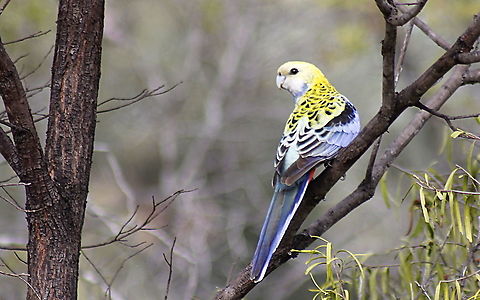
Appearance
The Pale-headed Rosella is 33 cm long, which includes the 15 cm length of its tail. Its underparts are pale blue, and upper breast and head are pale cream-yellow, the tail which is blue-black and green and the vent which is blood red. The feathers of the nape, scapulars and back are black edged with bright yellow, giving rise to a scalloped appearance. In these margins of the northern race, the yellow is paler with a pale blue tinge. The cheeks are wholly white in the southern subspecies, and partly flushed with blue in the lowerparts in the northern subspecies. The bill is pale blue-white and the legs dark grey. The eyes are yellow-brown. The sexes are similar in appearance, although the female is slightly smaller and duller.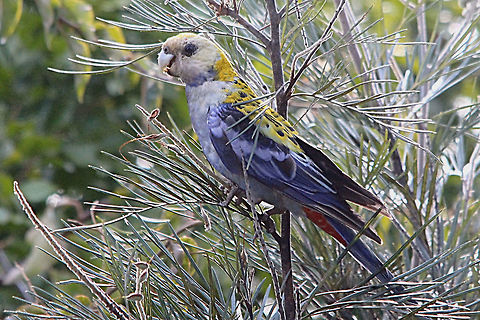
Naming
Two subspecies are recognised, although some authorities consider it to be conspecific with the Eastern Rosella of southeastern Australia.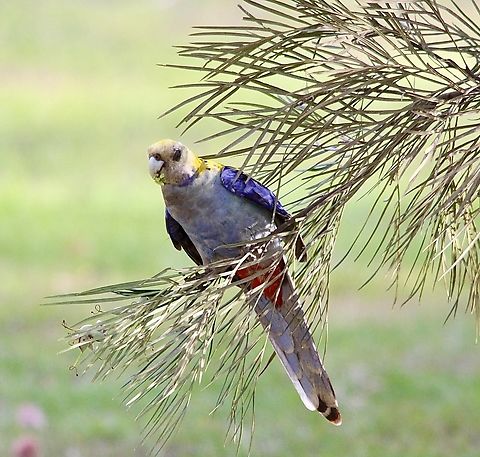
Distribution
The nominate subspecies "adscitus" is found from the Cape York Peninsula south through to Cardwell in central-northern Queensland. There is a broad range of intermediate forms, while the southern subspecies "palliceps" extends from Townsville and points inland south into northeastern New South Wales to the vicinity of the Clarence River. It is common throughout its range.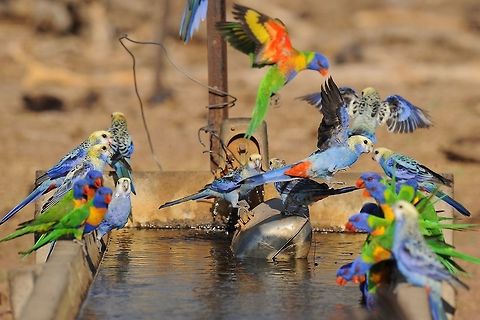
Habitat
Its preferred habitat is open forest, but has adapted well to human modification of the rural landscape and may even become a pest to orchards and cereal crops. Watering troughs help the species in the dryer western limits of its range.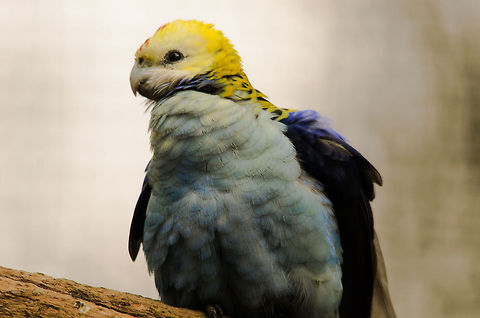
Reproduction
The breeding season varies according to region, with southern birds nesting from September to December and northern ones later from February to June. One brood is laid. The nesting site is usually a hollow over 1 m deep in a tree trunk anywhere up to 30 m above the ground. A clutch of five or six round, white and slightly shiny eggs, measuring 26 x 22 mm, is laid.Food
It eats grass and tree seeds and fruits, including River Red-gum, River Sheoak, Snow-in-summer and other melaleucas, and Rough Cockleburr. Birds are partial to the introduced Scotch Thistle.Cultural
The species is relatively hardy and easy to keep in cultivation. It can be aggressive and so is recommended to be segregated from other birds in captivity.References:
Some text fragments are auto parsed from Wikipedia.